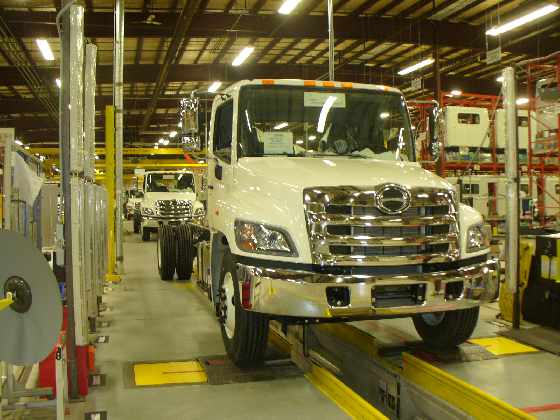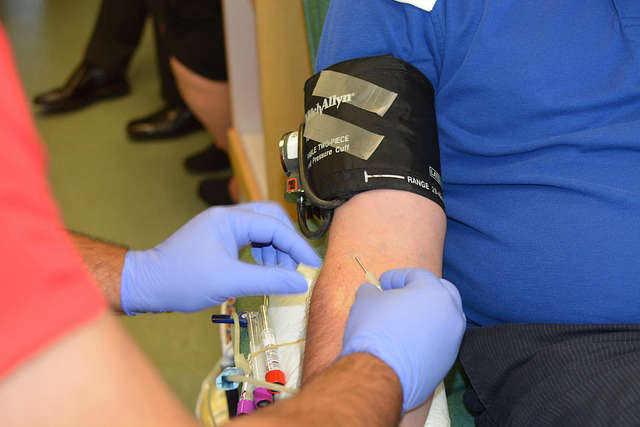
A new study suggests Oxford County will be the hardest hit area in Canada when it comes to automation.
A new report shows Oxford County could be one of the hardest hit areas in Canada when it comes to automation.
The Brookfield Institute for Innovation and Entrepreneurship recently conducted the study where they looked at automation and the impact it will have on the Canadian workforce. They found small town Canada is the most likely spots where computers and robots will put human beings out of work.
Oxford County actually showed up three times in top five towns or cities who will be the hardest hit by automation. Number one on the list was Ingersoll, number three was Tillsonburg with Woodstock falling in at number 5.
In Woodstock for example a quarter of the population works in manufacturing, with another seven percent in the food industry. Both of those sectors are more susceptible to becoming automated in the future.
Executive Director of BII+E Sean Mullin explained in a press release that the impact of automation will vary from city to city.
“We expect that the impact of automation will vary considerably across Canada's towns and cities. “By better understanding the geographic distribution of this trend, we believe the country will be much better prepared to weather the risks and reap the potential benefits of automation."
Some of the key findings in the report include:
- Small regional economies specializing in manufacturing or mining, quarrying, and oil and gas extraction are most susceptible to automation, including Woodstock, Ont., Tillsonburg, Ont. and Quesnel, B.C.
- Areas less susceptible to automation include cities and towns with a large hospital, post-secondary institution or public sector presence, for example, Petawawa, Ont., Ottawa-Gatineau, Ont., and Fredericton, N.B.
- Industries with the highest proportion of automatable work activities include: accommodation and food services; manufacturing; transportation and warehousing; agriculture, forestry, fishing and hunting; and mining, quarrying, and oil and gas extraction. About 62 percent of work activities could be automated within these industries.
You can read the study online here.



 Three Vehicle Crash Investigation in Brant
Three Vehicle Crash Investigation in Brant
 News Poll: Blood Donation
News Poll: Blood Donation
 WCI Red Players Present: Concert for the Cure 2024
WCI Red Players Present: Concert for the Cure 2024
 Oxford Resident Charged with Shoplifting
Oxford Resident Charged with Shoplifting
 Earth Day is Celebrated in Woodstock
Earth Day is Celebrated in Woodstock
 One Man Charged after Fraudulent Activity
One Man Charged after Fraudulent Activity
 Norfolk OPP Catch Impaired Driver
Norfolk OPP Catch Impaired Driver
 Woodstock Navy Club Welcomes Universal Washroom
Woodstock Navy Club Welcomes Universal Washroom
 Oxford County Waste Survey Closing Soon
Oxford County Waste Survey Closing Soon
 Woodstock Receives Award for Lifesaving Program
Woodstock Receives Award for Lifesaving Program
 OPP Investigating Door-to-Door Sales
OPP Investigating Door-to-Door Sales
 Stolen Car Spotted in Waterloo Region
Stolen Car Spotted in Waterloo Region
 Woodstock Receives Fourth-Quarter Payment from OLG
Woodstock Receives Fourth-Quarter Payment from OLG
 Oxford Attack U-19 Boys Vying for Spot in OBXL
Oxford Attack U-19 Boys Vying for Spot in OBXL
 Voting Open for Oxford Reads 2024
Voting Open for Oxford Reads 2024
 South Gate Expansion Expected to Begin this Summer
South Gate Expansion Expected to Begin this Summer
 Battle of the Badges this Sunday
Battle of the Badges this Sunday
 Two Charged in Woodstock Drug Bust
Two Charged in Woodstock Drug Bust
 UPDATE: LPS Constable Faces Three Charges
UPDATE: LPS Constable Faces Three Charges
 Premier Fumes Over Gas Price Increase
Premier Fumes Over Gas Price Increase


